Eclipse
Was seeing the annular eclipse in person a profound emotional experience? No, but it was pretty cool.
Annular eclipses don’t happen very often, and they are usually difficult to see without traveling great distances. Thus, when we learned that an annular eclipse would be visible in the southwestern US, Tyler and I decided to go.
After nine hours of driving, an overnight stop in Rico, Colorado, and a touristy photo-op at Four Corners, we arrived in Kayenta, Arizona. Why Kayenta? First, the full annular eclipse would be visible there, and second, the landscape features amazing rock formations. It was those rock formations that tipped the trip in favor of Kayenta as opposed to the much closer (to Denver) Albuquerque.
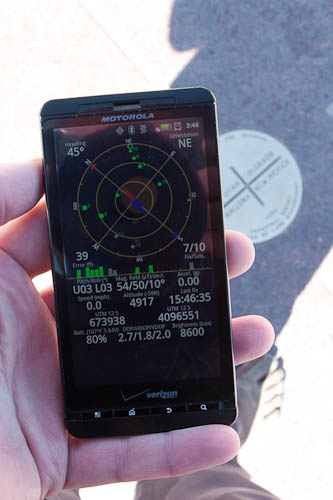
Checking the accuracy of the Four Corners marker.
With an hour remaining before the point of maximal eclipse, we started driving around unpaved roads in the Arizona desert. We had to find a piece of landscape that was both interesting and in the right spot. Several candidates were beautiful but far too close, and several others would have been great had they not been so far south.
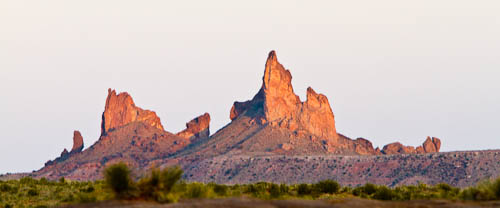
Some of the rock formations near our shooting site
We drove and drove, bumping up and down the rough gravel roads, and then we found it: a rock outcropping with a great view of a tall rock monolith. We set up our cameras using the longest (if not the sharpest) glass we had available.
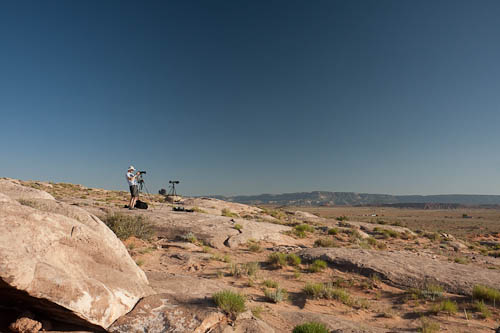
Shooting location
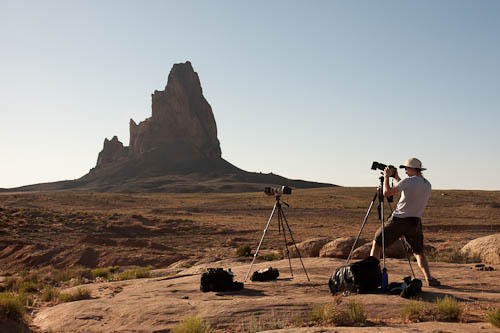
The shooting location from the other direction. For reference, that peak in the background has a prominence of about 1000 feet.
Slowly, the moon began transiting the sun. We watched through the welders glass both directly and on our cameras’ screens.
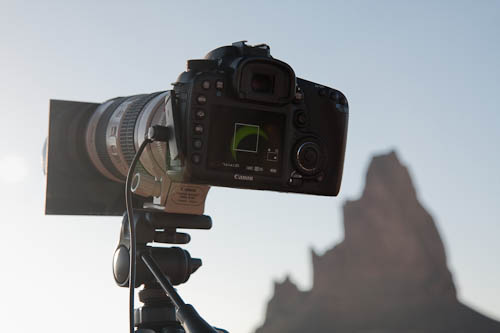
Partial eclipse as seen on my DSLR's live view
The light got dimmer and dimmer. Through the very dark filter, we could see the sun’s detail, but without the filters, it was still just a brilliant blob in the sky.
Finally, the moment came, and the sun became a ring around the moon. We snapped photos, watched in awe, and snapped more photos.
I slid the 12-stop welders glass filter up the end of lens, turning it into a makeshift 12-stop grad-ND filter. That let me shoot the sun and the silhouetted landscape in the same frame; no post-production sorcery required.
After less than five minutes, the moon had reached the other side of the sun, and we were again watching a partial eclipse. The photos continued, but without the distinctive ring.
I enjoyed the eclipse immensely. As I mentioned above, I didn’t get emotional, but I did have a huge grin on my face. It was a new experience for me; I was exploring. Given how rare annular eclipses are, I doubt I will ever witness one again.
In time, the sun set. The eclipse was not done, so it appeared as an unusual triangle of light slipping below the horizon.
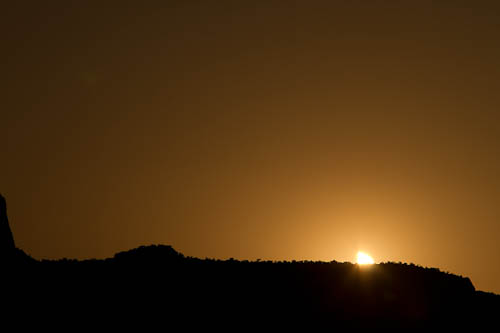
Setting triangular sun
The trip was a success. The welders glass worked well as a filter once we learned to stop down as much as possible. I wish I had shot the start of the eclipse at f/45, which is what I used for the end. At f/8 or even f/16, the imperfections in the glass caused horrendous blurring and ghosting.

The sun partially eclipsed, shot through welders glass at f/45 and color-corrected. Note the sunspot in the lower right.
Next up: the total eclipse visible in the central US in 2017.

Love these pics!!!!!!!!
@Andrea Thanks!